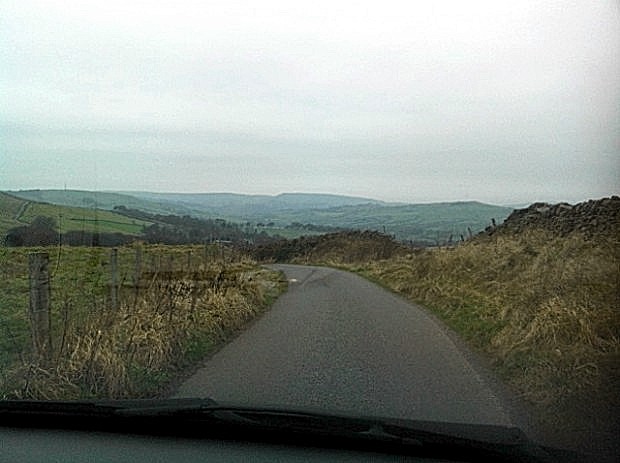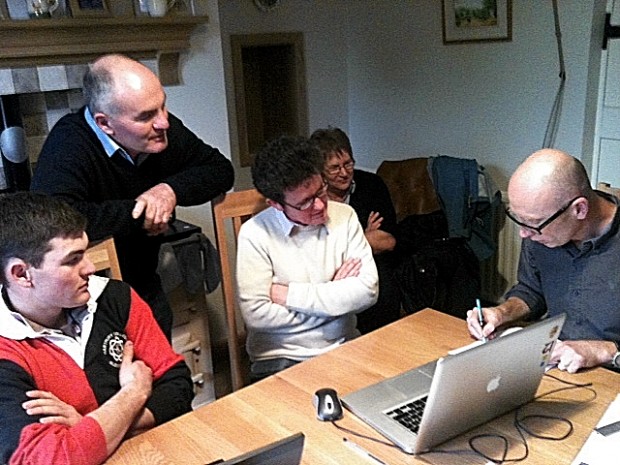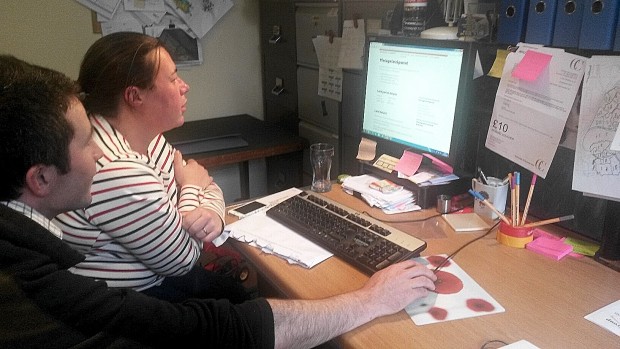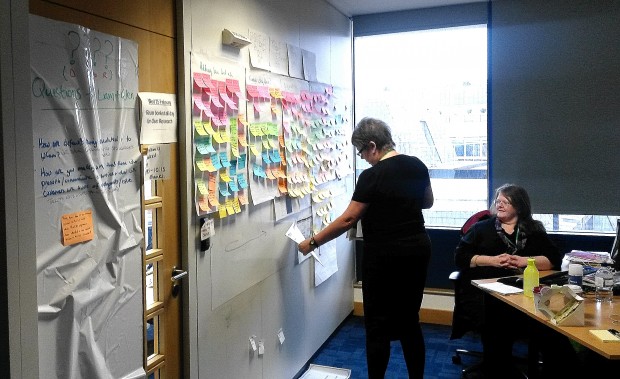I’m part of the user research team working on Defra’s Rural Payments exemplar, and I’m constantly grappling with where to carry out research with farmers and their agents.
As Naintara Land shared in her post, Doodles on why doing user research in the right place matters, we should understand and be able to share our users’ reality "in all its messy and convoluted glory”.
In our case, that means visiting users where they work. On their farms.
Single track roads and enthusiastic farm dogs
Carrying out user research sessions with farmers at their workplace - often their home doubled up as a farm office - is an essential part of our work. It’s a great opportunity to gain an understanding of our users’ interactions with their environment and, as a side benefit, we get to explore the variety of landscapes and habitats that make up the English countryside. I’m on secondment from Natural England after all!

Negotiating single track roads and enthusiastic farm dogs is not without its challenges, as our previous colleague Cathy Booth described in her post Tales from a rural user researcher. Research in a lab is definitely easier, but we don’t get the same kind of interaction as we do on farms.
One digital service/many user contexts
We may be building one digital service, but its application is different depending on whether a user works in the Uplands with livestock, in the arable plains of Cambridgeshire, or practices organic farming.

Only out on the farm can we witness farmers waving their hands at the screen, then pointing out the window and saying:
See that track on the map? It’s not a track. Look it’s a ditch!
We’re trying to uncover user needs and visiting farmers at their farms and in their home offices allows them to refer to documents and show us (not just tell us) about the things that concern them.

But how to bring all this in-situ experience and reality back to life in the office so that our colleagues can gain the benefit of our research too?
Field recordings have limits
Video recorded in the field has limits. The camera is usually positioned to focus on the user's face and on their screen view. The user will often have paper copies of maps on their laps, which they're pointing to, or they'll walk off to another room to show us a spreadsheet on the wall of field parcel sizes. It’s difficult as a researcher, and not a film crew, to capture this without disrupting the research. Of course we can report back to the team, but the video doesn't capture everything going on around us.
As a side note, 50% of our recruitment is DIY. This is not because it is cheaper - it can actually be more expensive - but because with direct contact we can negotiate timings that suit the direction we're driving in. This allows us to fit more visits in. Also, we understand which Defra offices are near the user, so, if necessary, we can arrange a different meeting point. These are all things a recruiter can't do for us.
User research is a team sport
We’ve been working to honour the ethos of encouraging people from across the team to understand their users first hand by getting their dose of user research. My fellow user researchers and I have cajoled and even dragged! colleagues on farm visits, but, as we face sprint deadline after deadline, such trips are seen as a nice-to-do.
In response, we set up observation sessions in our Reading office every 6 weeks and invited farmers from a 50-mile radius to our makeshift lab. We invited colleagues to observe.
This approach enabled us to see more users faster - 5 or 6 in a day compared to 3 or 4 when we were out on the road. Aside from the fact that we weren’t travelling, research kit and IT connectivity tend to be more reliable in our office, which saves on time.
We were able to get colleagues involved in notetaking during the sessions and in recording responses in the observation room. Very recently we’ve had success in engaging colleagues who attended the research in affinity sorting sessions, which lead to much quicker iterations of our prototypes.

I was recently asked to estimate how many of the 420 programme staff are getting their 2 hours every 6 weeks exposure hours. I suggested 5%. Clearly we need to keep chipping away at this challenge.
Bringing the users’ reality to life
Certainly both approaches - on farm and in office - are producing valuable insight. Whether one is better than the other is likely dependant on whether we’re doing usability research or discovery phase research. If we want colleagues to be involved in user research for Rural Payments, we need to bring the research to them. But, what they miss in not joining us on the farm is an enriched experience of the context our users work in.
We need to keep striving to bring users’ reality to life for our teams. Videos, photos, anecdotes, data-driven persona and analytics are all useful.
What ideas do you have for playing back in-situ research and helping colleagues empathise with their end users’ reality?
Keep in touch. Sign up to email updates from this blog. Follow Emily on Twitter.